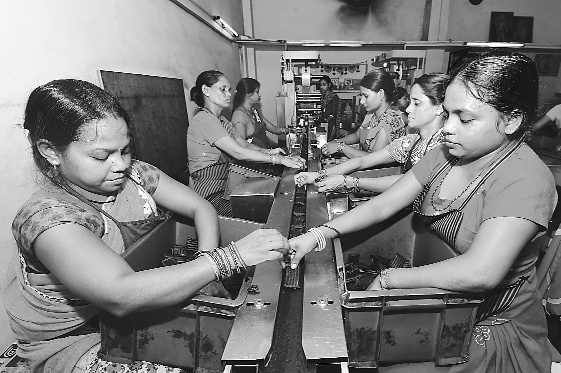What is common among Amitabh Bachchan, Hema Malini and Mahendra Singh Dhoni? Here’s the answer: they are brand ambassadors for agarbatti (incense sticks) manufacturers trying to out-scent against each other in an industry said to be worth Rs 6,000 crore annually.
Bachchan represents Cycle Pure Agarbathies, manufactured by Mysore-based NR Ranga Rao & Sons. Hema Malini is roped in by Bangalore-based Moksh Agarbatti, and recently, Madhya Pradesh-based Mysore Deep Perfumery House called in MS Dhoni as the face of their flagship brand, Zed Black.
Last year, Baba Ramdev’s Patanjali Ayurved, forayed into home worship category under Astha brand. Patanjali has been selling agarbattis for the past couple of years under the Madhuram brand, but is now set to launch a wider range of products used in poojas. The Mysore-based NR Group is currently the largest player with its Cycle brand of products. Kolkata-based ITC is also a major player with its Mangaldeep brand, which is one of the fastest growing incense brands in the country.
Spawned by religious sentiments, these manufacturers focus on innovation in printing and packaging and deploying automation in the manufacturing process. Industry sources claim the agarbatti and dhoop batti market is growing at a healthy rate of 9-15%. Agarbatti industry provides direct and indirect employment to nearly 2.5 million, including unskilled and semi-skilled people, throughout the country. Women form more than 90% of the workforce, with most of them working from home.
Tough competition
More than 10,000 units are engaged in the Agarbatti production throughout the country, mostly based in southern and central India. The government has declared Agarbathi as a handicraft product. The fact is that the manufacturing process is not fully automated and is highly labour-intensive. That’s perhaps why manufacturers want to stay under the protective umbrella of ‘handicraft.’ An almost glut-market has led to extremely competitive pricing.
“The manufacturers are under constant pressure to reduce the price or the cost,” says Pradeep Kumar Jain, managing director of Chandigarh-based Devdarshan. Anshul Agarwal, director Zed Black, says the industry is also facing shortage of natural raw materials such as fine bamboo sticks and Jigit powder — a delicate mixture of herbs. “Since atomization is limited, the industry remains labour-intensive,” he says.
Then, there are cases of trade mark violations. “Unorganized players continue to cop a brand and sell in retail market. The government must intervene,” says Pradeep. Anand K Ashiya, MD, Moksh Agarbatti Co, says lack of trained manpower and knowhow has been a challenge, made even more difficult post GST implementation.
Automation & innovation
Both Anshul and Pradeep agree that to keep abreast with the times, the industry must innovate. Pradeep’s unit engineers have developed a few machines that have replaced hand-rolling of agarbattis, thus enhancing production and saving time. The others in the industry have started importing machinery from Vietnam. The stress is on packaging — re-sealable zipper packs have become a new trend — and coloured incense sticks have given a new hue to religious ceremonies.
Manufacturers point to another change: a popular pack worth puny Rs 2-5 a few years back has now given way to Rs 20-50 a pack, encouraging the manufacturers to believe that the consumer wants to spend more. They have a reason to: the exports are beginning to go much beyond the traditional Europe and the US markets.
Aroma through ages
- The oldest reference to agarbatti is found in the Vedas. The aroma was used for creating a soothing atmosphere for meditation, and also as a medicinal tool
- Agarbatti is derived from Sanskrit word Agaravarthi, (gara: odour, agar: aroma, varthi: wound). Incense is made from thin bamboo offshoots, charcoal, herbs, and a suitable fragrance
- Natural and artificial aromatic material are used along with diluents used in perfumery, dough prepared by using wood flour, natural glues, charcoal, and some binding material
- India has over 10,000 agarbatti units mostly based in southern and central India. It comes under handicraft items
Unlock Exclusive Insights with The Tribune Premium
Take your experience further with Premium access.
Thought-provoking Opinions, Expert Analysis, In-depth Insights and other Member Only Benefits
Already a Member? Sign In Now










